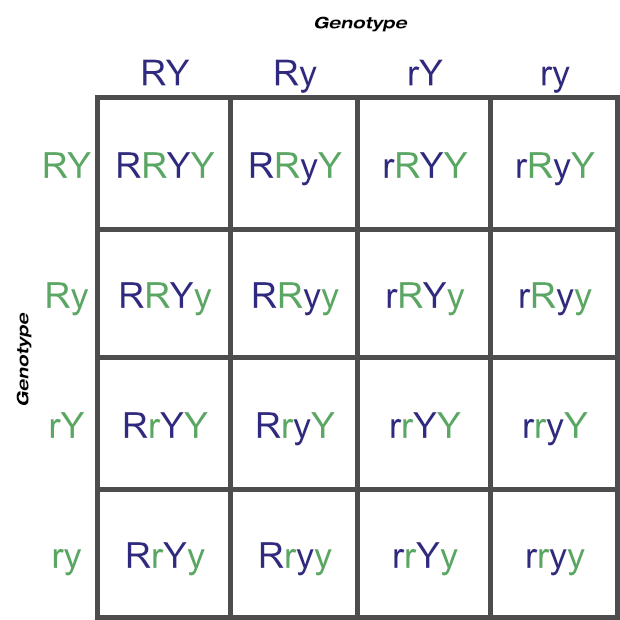Mendel's Three Laws
From Mendel’s pioneering research on peas discussed here and here he devised three laws:
The First Law: the law of segregation
Mendel observed that inheritance was not some blend of parental characters. For example, the progeny from a purebred plant with green seeds when crossed with a purebred plant with yellow seeds had yellow seeds, not some yellow-green blend. Crossing the F1 generation, which were all yellow to the eye, produced mostly yellow seeds, but sometimes green as well. From this he determined that there were units of heredity he called ‘factors’ — in this case there was a ‘factor’ which produced yellow seeds and a ‘factor’ which produced green seeds. These ‘factors’ (we now call them genes) segregated in some way such that a parent, which carried two such ‘factors’, would pass just one of its two to its offspring, with the other parent also contributing just one of its two.
The Second Law: the law of independent assortment
When Mendel crossed, for example, RrYy plants with each other — plants that visibly contained round, yellow seeds but were not purebred for those — he noticed that offspring could be any combination of round or wrinkled and yellow or green. We can see the combinations in the Punnett square below:

© Optimate Group Pty Ltd
The round (or wrinkled) unit a parent passed on to its progeny had no influence on whether a yellow (or green) unit was also passed on. The units that determined seed shape were sorted independently of the units determining seed colour, and all were passed on independently of each other.
The Third Law: the law of dominance
Each characteristic Mendel studied comprised of two characters. For example, the characteristic of seed colour had two characters: yellow and green. For each pair of characters, one was always dominant to the other in that it was always expressed even when in the presence of the other character. Plants that had both the yellow seed character and the green seed character always produced yellow seeds. Yellow was dominant to green, without exception. The non dominant green was recessive by nature, and recessive when bred to recessive produced only recessive, always. Green (recessive) seeded plants when bred together only ever produced green seeded plants, never (dominant) yellow seeded ones.
Mendel’s work was truly groundbreaking. Yet while he intuited that units and not blends were behind inheritance, he never knew what those units actually where, or how they segregated and independently sorted themselves. That knowledge would come many years later, when scientists rediscovered his long-forgotten work, reproduced his results, and began to look deeper into the mechanisms at a cellular level. It is these mechanisms we shall cover in upcoming posts.
Leave a comment